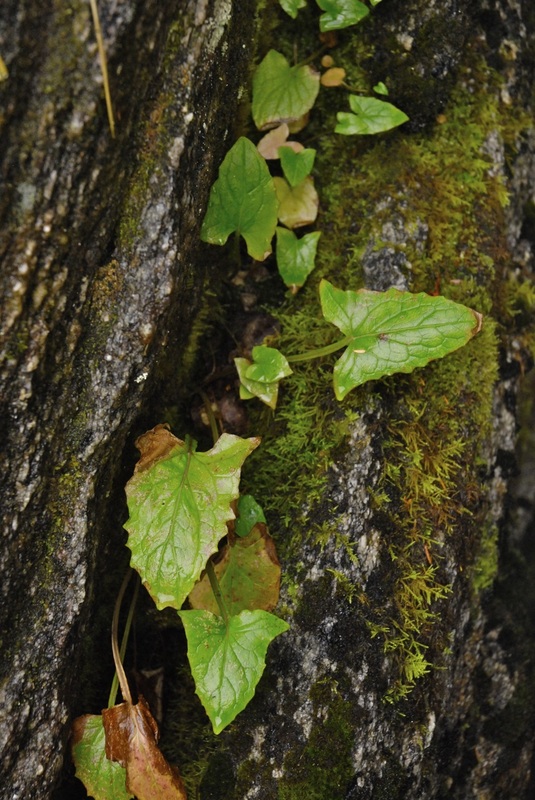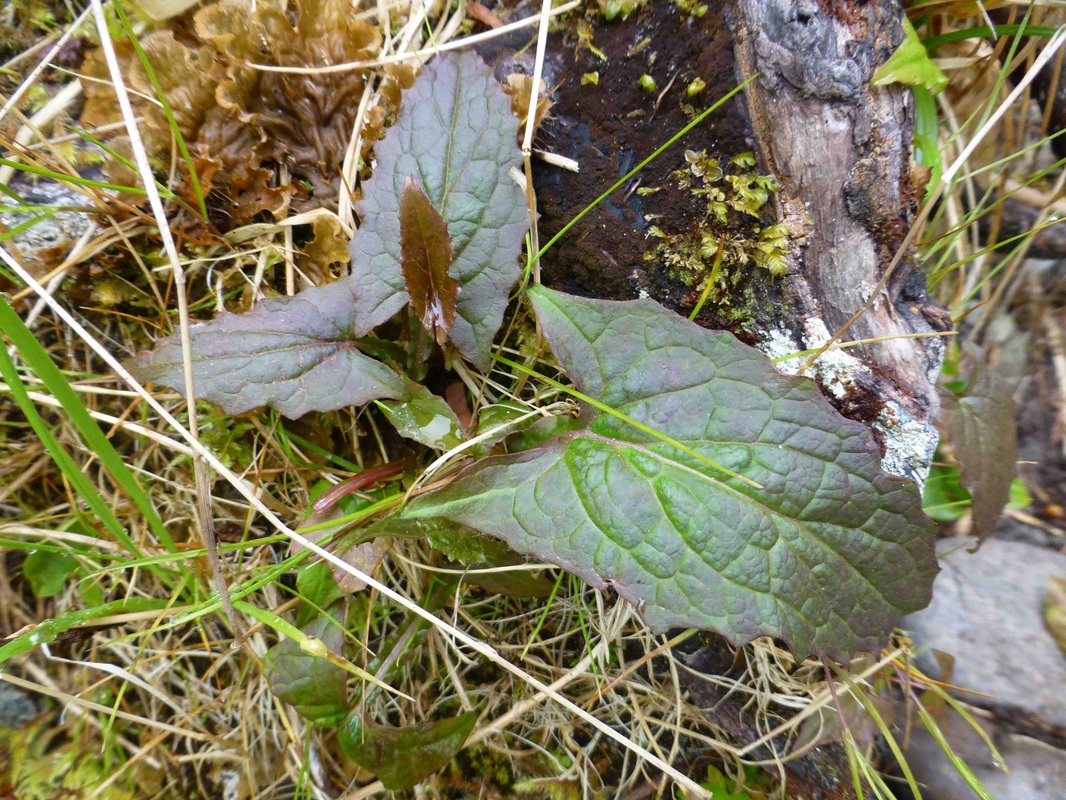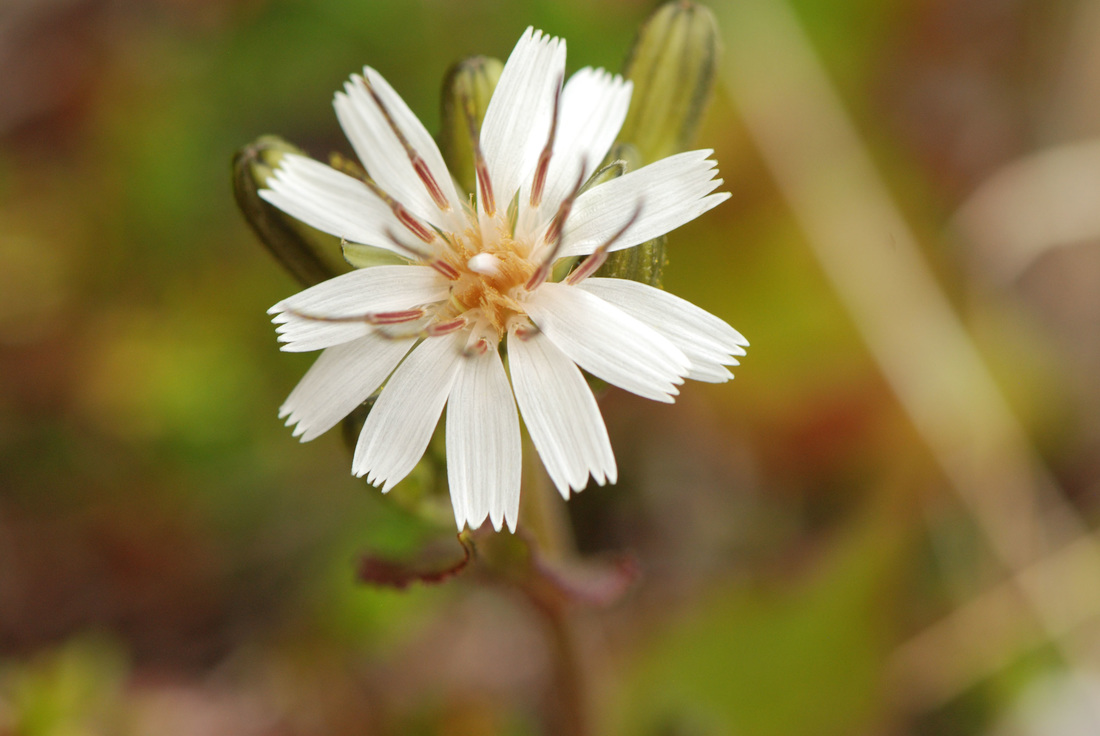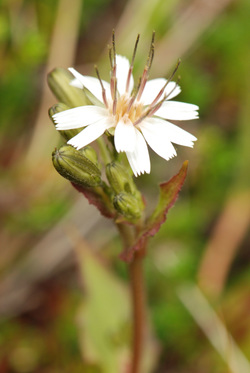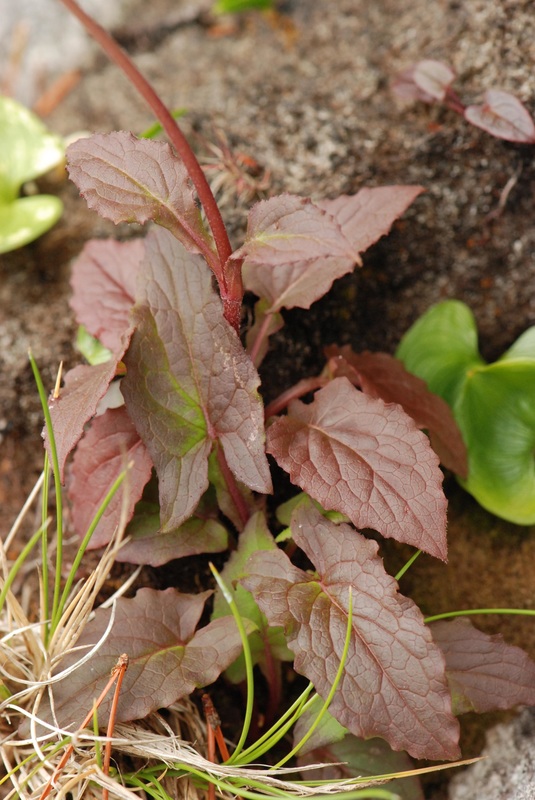Western rattlesnake-root • Prenanthes alata
{Prenanthes = drooping flower; alata = winged - a reference to the winged leaf stalks}
Identification
Western rattle-snake root is a perennial species distinguished by its arrowhead-shaped leaves. The lower and middle leaves have winged stalks. The leaves are thin as well as coarsely- and irregularly-toothed. The upper leaves are smaller and may be stalkless. The white to pinkish flowers form loose clusters at the top of the plant, which grows 15-80 cm tall. Western rattle-snake root oozes a milky juice when broken.
Habitat & Range
Western rattle-snake root grows in moist to wet areas: open and edge areas of moist forests, wet rocks, along stream-blanks, rocky beaches, and shoreline bluffs. It is found from low to middle elevations. Its range extends from Alaska south to Oregon and east to Alberta. It is more common closer to the coast and at lower elevations.
Similar Species
Arrow-leaved groundsel (Senecio triangularis) and western rattle-snake root have similarly-shaped leaves; when in flower the two are easy to tell apart as the former has yellow flowers. Arrow-leaved groundsel does not release a milky fluid when broken, and its leaves, which lack winged stalks, are more triangular- or heart-shaped rather than arrow-head shaped.
Western rattle-snake root is a perennial species distinguished by its arrowhead-shaped leaves. The lower and middle leaves have winged stalks. The leaves are thin as well as coarsely- and irregularly-toothed. The upper leaves are smaller and may be stalkless. The white to pinkish flowers form loose clusters at the top of the plant, which grows 15-80 cm tall. Western rattle-snake root oozes a milky juice when broken.
Habitat & Range
Western rattle-snake root grows in moist to wet areas: open and edge areas of moist forests, wet rocks, along stream-blanks, rocky beaches, and shoreline bluffs. It is found from low to middle elevations. Its range extends from Alaska south to Oregon and east to Alberta. It is more common closer to the coast and at lower elevations.
Similar Species
Arrow-leaved groundsel (Senecio triangularis) and western rattle-snake root have similarly-shaped leaves; when in flower the two are easy to tell apart as the former has yellow flowers. Arrow-leaved groundsel does not release a milky fluid when broken, and its leaves, which lack winged stalks, are more triangular- or heart-shaped rather than arrow-head shaped.
References
Pojar, J. and MacKinnon, A. (1994). Plants of Coastal British Columbia. Vancouver, BC: Lone Pine Publishing. P. 277.
Prenanthes alata (Hook.) D. Dietr. In Klinkenberg, Brian. (Ed.). E-Flora BC: Electronic Atlas of the Plants of British Columbia. Lab for Advanced Spatial Analysis, Department of Geography, University of British Columbia, Vancouver. Accessed 25/09/2014.
Authors and editors of page
Kelly Fretwell and Brian Starzomski (2014).
Pojar, J. and MacKinnon, A. (1994). Plants of Coastal British Columbia. Vancouver, BC: Lone Pine Publishing. P. 277.
Prenanthes alata (Hook.) D. Dietr. In Klinkenberg, Brian. (Ed.). E-Flora BC: Electronic Atlas of the Plants of British Columbia. Lab for Advanced Spatial Analysis, Department of Geography, University of British Columbia, Vancouver. Accessed 25/09/2014.
Authors and editors of page
Kelly Fretwell and Brian Starzomski (2014).
